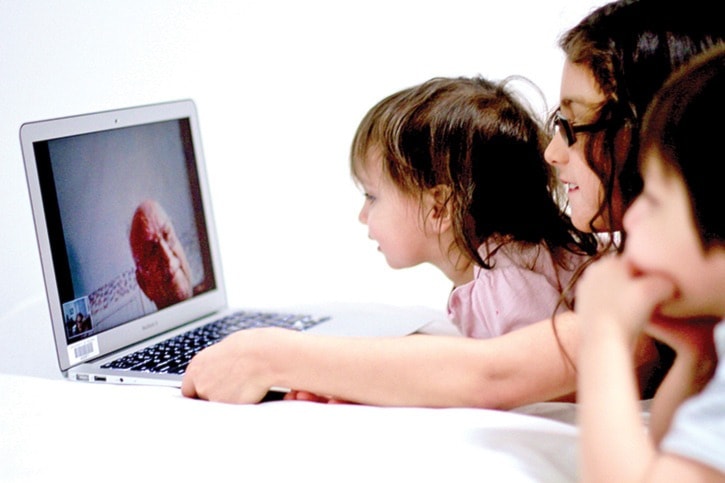Get off the phone at dinner, dad.
No texting during story time, mom.
There was a time when the art of parenting was passed down generationally. Many of the traditional skills still apply, but parents today are also jumping into the completely new, and still unknown, world of smartphones and tablets in addition to computers and televisions. In some cases, teenagers are getting smartphones before their parents realize what the device is capable of.
The challenge in 2013 isn’t keeping new technology from our children, however, it’s teaching adults to see technology as a way to connect with people and as a learning tool, and not something passive like TV that can isolate us, says Prof. Valerie Irvine, co-director of the Technology Integration and Evaluation Research lab at the University of Victoria.
For some parents it means looking in the mirror at their own usage of smartphones and iPads.
“Who is mentoring and guiding our kids’ (use of technology) if parents don’t have network literacy or know how to monitor it?,” Irvine asked.
Parental monitoring of phones and other device usage is a start, but parents also need to engage their children’s use of technology and Irvine says to start by the time they’re in kindergarten.
“Cutting out technology is not where the world is at right now,” Irvine says. “We need to encourage and teach them to make choices. The medium is a big role in their life.
“There’s a criticism and worry about mobile phones but really, the mobile device allows connection between people. FaceTime, Skype and such programs connect us with others. In divorced households they’re great for children to connect, as well as with grandparents, and even for parents to connect with their parents for mentoring.”
Where television tends to fixate its viewers and smart devices demand at least some level of interaction, it’s generally accepted that all screen time be lumped together with a daily maximum. The Canadian Paediatric Society suggests no screen time for children younger than two, less than an hour for children two to four, and less than two hours of recreational screen time for ages five to 17.
Irvine stands behind it as a form of digital hygiene. Gradual development of appropriate use and informed decision-making through small steps is important. Making little judgment mistakes and having teachable moments when risks are small can help to develop the self-discipline needed by the time children reach the middle years.
“Family values aren’t new, they just need to be updated to handle these mediums,” says Allison Rees, who’s Living In Families Effectively (LIFE) seminars have guided hundreds of Greater Victoria parents through the challenges of child rearing. “Certainly we need screen-free zones, such as the kitchen, the kitchen table, the car, etc., to foster conversation.”
Rees’ longtime colleague Alison Miller, refers to the concept of social viruses. One such social virus is the process of letting a child who normally has restricted screen time visit a household with unlimited or unmonitored screen time.
And that’s OK too, Rees says, as long as parent and child discuss the experience and can grow from it. Perhaps the child will get upset with their parents’ rules, which is an important part of development.
“There’s stories of teenagers who reach university and have no barometer for technology usage and are unable to stop themselves,” Rees says. “They’ll have to make their own decisions eventually. Be up front in conversation as much as possible about the amount of (television, Internet or device usage) while away from the (parents).”
A small child doesn’t have a need for confidentiality, Rees reminds us. The more early dialogue the better. In fact, Irvine suggests to get the child their own smart device, such as an iPod (which does most of what an iPhone does but without the phone), but not until they’re school age and with limited use.
“The iPod has all sorts of learning apps that can be downloaded and done together,” Irvine says. “Talk about the app, teach them how to assess apps and computer websites before they download or click on them.”
Parental passwords can be set on the iPod, as well as other controls to limit what grade school kids can access.
“Eventually, once they reach middle school,” Rees says, “they’re going to be able to access anything on the web that we can and they need to be prepared for that.”
sports@vicnews.com
